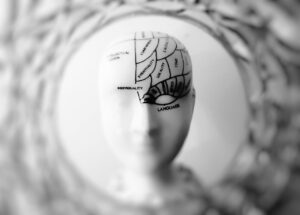Emotion Cards For Autism Charities
One thing that almost all autistic people struggle with is reading and portraying emotion. Autistic people generally have a hard time reading and understanding other people, due to the fact that they like consistency and humans are always changing their emotional state. They also struggle to regulate their internal emotions and feelings, so it can be tricky for others to understand how they are feeling and what they want. Luckily there are a number of tools that charities and parents can use to better understand and communicate with their autistic children, one of which is special emotions cards. These new emotion cards for autism can be used to show exact emotions, and they help autistic children map their own emotions and understand the feelings of others.
 Understanding The Science Behind Emotions
Understanding The Science Behind Emotions
Emotions are non-heterogeneous states associated with the nervous system resulting from neurophysiological differences, notably associated with emotions, feelings, behavioural reactions, and a certain level of joy or displeasure. There is presently no universally accepted definition. The word emotion is derived from a Greek term “emotion” and “sensation,” the latter being the better-known translation. In clinical use, the term emotion can be used to refer to any of the following: sensitivity, affect, arousal, cognition, motivation, attitude, self-monitoring, and control. Autism affects approximately 20% of children diagnosed with the disorder.
Autism Unwrapped
Autism is associated with a number of disturbances in several areas of behaviour, including emotional expression, cognitive processing, and brain functioning. Many of these behaviors result from varying combinations of genetic and environmental factors, while others result from developmental problems such as inadequate exposure to stress and family distress. In addition, emotions may be the result of chemical imbalance within the brain. In many cases, emotions are a result of neurological dysfunctions that interfere with both emotional and non-emotional processes in the brain.
Emotions are an integral part of all of our experiences and they play important roles in regulating our behaviour. We feel anger, fear, and desire when we are faced with a threat, danger, or pain. In situations that we can control, we use our emotions to overcome the threat or help us avoid it. However, in situations that cannot be controlled, our emotions are used to deal with the challenge. For example, when we are scared we can use our emotions to distract ourselves, laugh it off, become engaged in another activity, or even cry.
 The Importance Of Emotional Regulation
The Importance Of Emotional Regulation
Our emotions are a powerful tool for helping us adapt and overcome our physical and mental challenges in life. Our emotions allow us to make adaptive changes in our body and brain to protect us from danger or pain. However, when negative emotions such as fear and anger take over our emotions, we can experience negative effects in our body and brain. The physical symptoms include tremors, headaches, sweating, nausea, vomiting, diarrhoea, dizziness, tense muscles, cramps, and fatigue. The psychological symptoms include low self-esteem, anxiety, trouble concentrating, negative thoughts, compulsive behaviors, insomnia, and depression.
Our emotions are very complex and they depend on many different components. Some of them might be biological, some of them may be psychological, while others are a combination of both. People differ in how their emotions behave. Some react more quickly to negative stimuli than others, while others’ emotions respond more slowly. Someone who experiences rapid heart beat might feel sad while someone with a slower heartbeat might feel angry.
